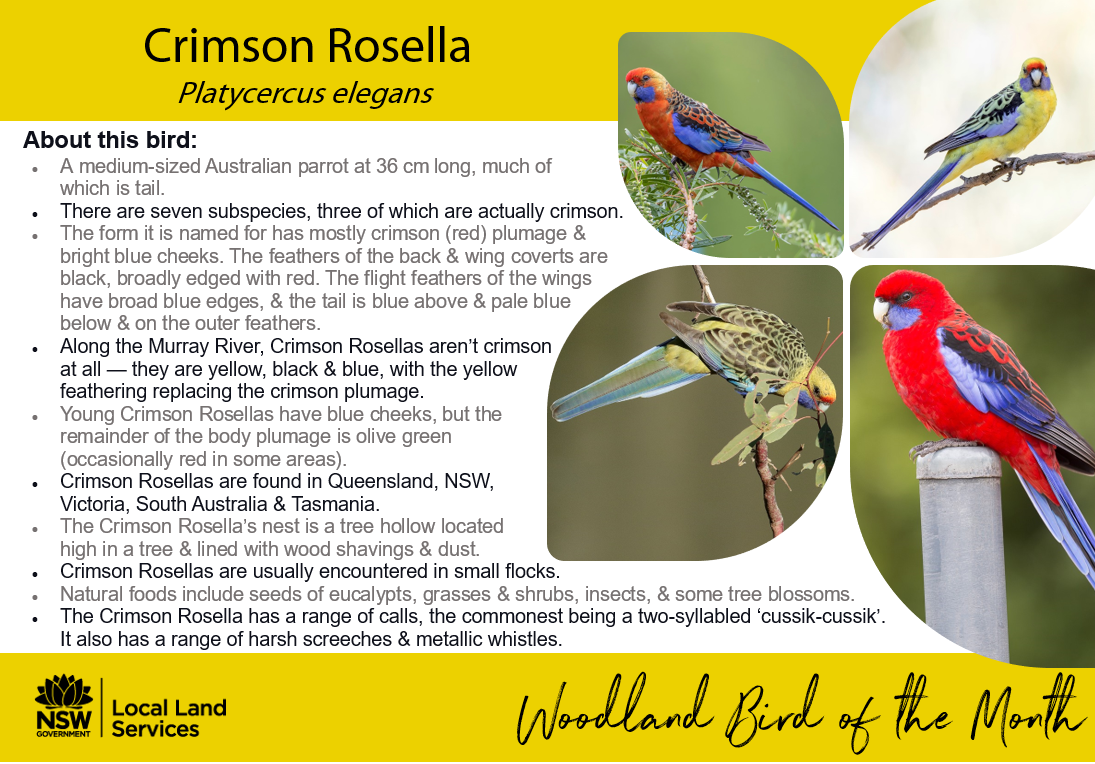Woodland Bird of the Month: The (not always crimson!) Crimson Rosella
06 May 2022
PRODUCTION ADVICE & NRM NEWS - MAY 2022 - ENVIRONMENT
By Shanna Rogers
Senior Land Services Officer - Environment
P: 02 6051 2241 | M: 0457 733 261 | E: shanna.rogers@lls.nsw.gov.au
When is a Crimson Rosella not crimson? In the Murray region! Whilst, across our region we can indeed find the typical red coloured form (Platycercus elegans elegans) the ‘Yellow Rosella’ (Platycercus elegans flaveolus) is also common.
Whether crimson or not, these much-loved birds have vivid colours and musical calls and are tolerant of humans. Usually found in twos or threes, they can also occur in larger groups, and readily visit most gardens searching for seeds and fruit.
Encourage rosellas to frequent your farm or garden by:
- Planting native flowering plants that rosellas can feed on. Pultenea and other pea flowers produce seeds that rosellas like to eat. Rosellas also love wattles, eucalypts, callistemons, banksias, grevilleas, melaleucas and other local native plants which produce seeds or fruits.
- If you don’t have any large trees in your backyard, create a nesting box to provide shelter.
- Controlling predators like cats and foxes
- Avoid removing large old trees with tree hollows, which rosellas like to nest in.
Did you know?
Crimson Rosellas come in red, orange, and yellow forms and are an olive-green colour as juveniles. All subspecies have the diagnostic blue cheek.
Clockwise from top left 📸 thanks to:
- Crimson Rosella (C)Bill Harding 2017 birdlifephotography.org.au,
- Crimson Rosella (C)Stephen Garth 2022 birdlifephotography.org.au,
- Crimson Rosella (C)Geoffrey Dennis 2018 birdlifephotography.org.au,and
- Crimson Rosella (C)Diana Womersley 2019 birdlifephotography.org.au.
